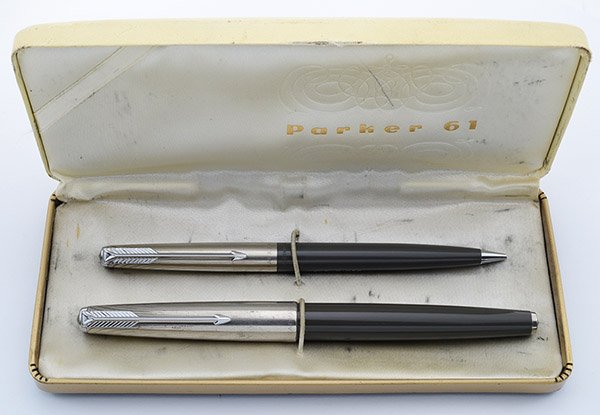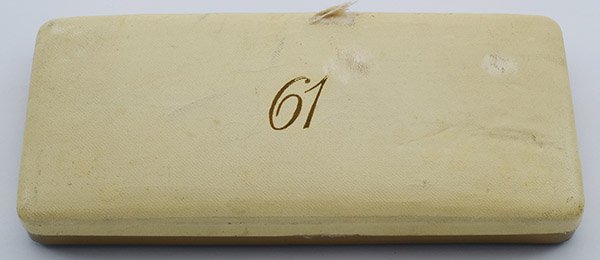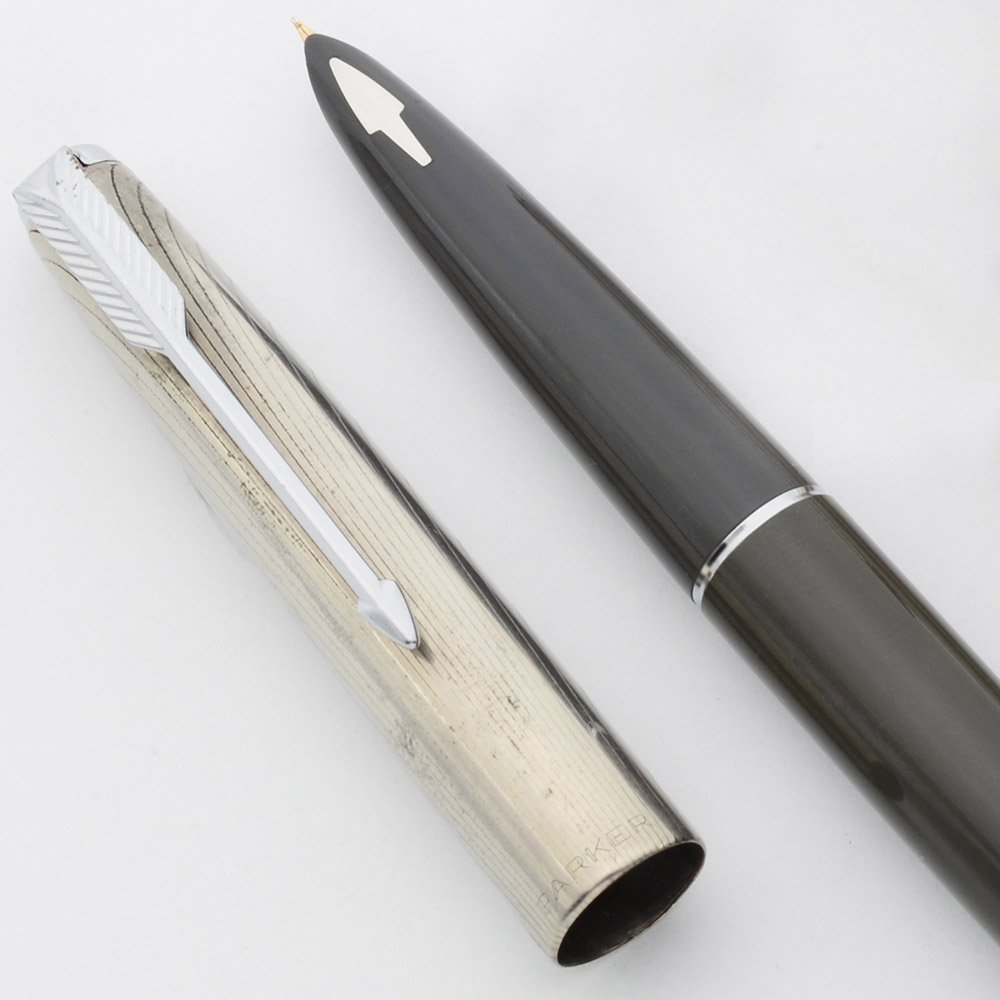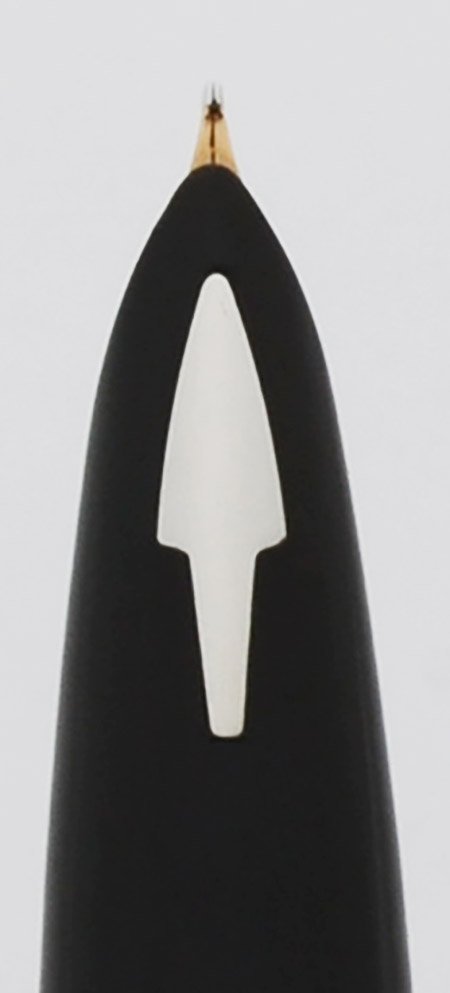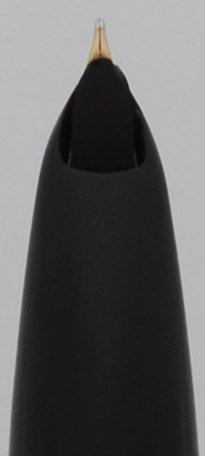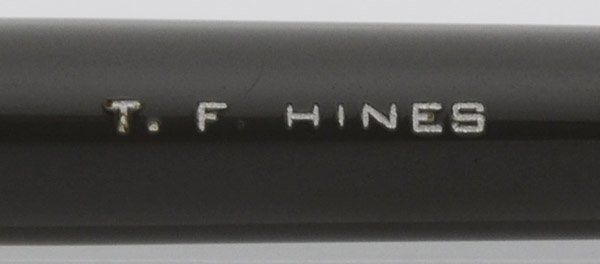Product Description
Type Vintage fountain pen with unique filling system.
Product Name Parker 61 Legacy - Mark II, the "Legacy" refers to the cap used. There is some contradictory information out there on the different versions but we are calling the Mark I the thin clutch ring version and the Mark II the thicker clutch ring version. (The Mark III would be the cartridge/converter version. The clutch ring is the band between the section and barrel.)
Manufacturer and Year Parker, made in USA – 1962, the official years for the cap are 1958-59 but this is a Mark II pen by our definition which was introduced in 1962.
Length The pen is 5-9/16" and the pencil is 5".
Filling System The fountain pen has the capillary filling system which is unique to this model. See further details below. The pencil takes 0.9mm leads which extend via a twist mechanism. There is an eraser beneath the cap.
Color Charcoal Grey with the "Legacy Rainbow" cap of nickel and silver arching "rainbow" swirls. The pen has pearlescent jewels on both ends and the pencil has a pearlescent cap jewel.
Nib FINE 14k gold nib is smooth and firm with great tipping material.
Condition The set is in excellent condition, with no cracks. The arrow inset in the hood is in excellent condition with no lifting edges. Both caps have a few shiny spots of finish wear but the rainbow stripes are quite clear. The pen has a mark like dent to the left of the clip (it has been photographed below) and a lighter mark on the right side. The charcoal grey has handwear but no real scratching. The teflon coating on the capillary filling system looks great. The pencil has been personalized, "T.F Hines." You'll need to be patient when you fill it the pen for the first time, as it takes a few minutes or so for the capillary system to suck in enough ink to get started.
Here is how you fill a Parker 61, and an insight into how the pen actually works. Unscrew the barrel and stick the back end of the pen (aka the capillary cell) into a bottle of ink. Wait a few minutes (probably more like a half hour when you first start one of these older used ones), and let the ink wick up into the capillary cell. The cell contains a sheet of perforated plastic that has been given a 3-D pattern resembling tire tread, and rolled up. The perforations allow ink to seep between the rolled-up layers, and the tread pattern maintains space between the layers. In the middle of this tube, which runs the entire length of the capillary cell, is the feed. To keep things clean, the capillary cell has on a coating of teflon on the outside that is intended to shed ink as the user withdraws the pen from the ink bottle, leaving very little ink to be wiped off. The end of the barrel contains a spring-loaded thingy which covers the open end of the capillary tube, but still allows it to vent.
